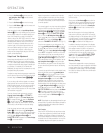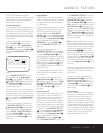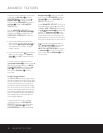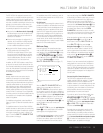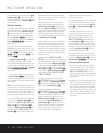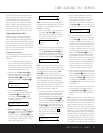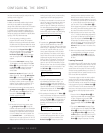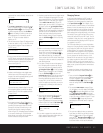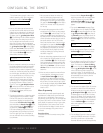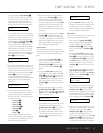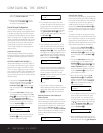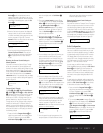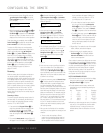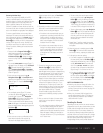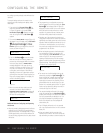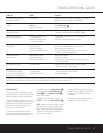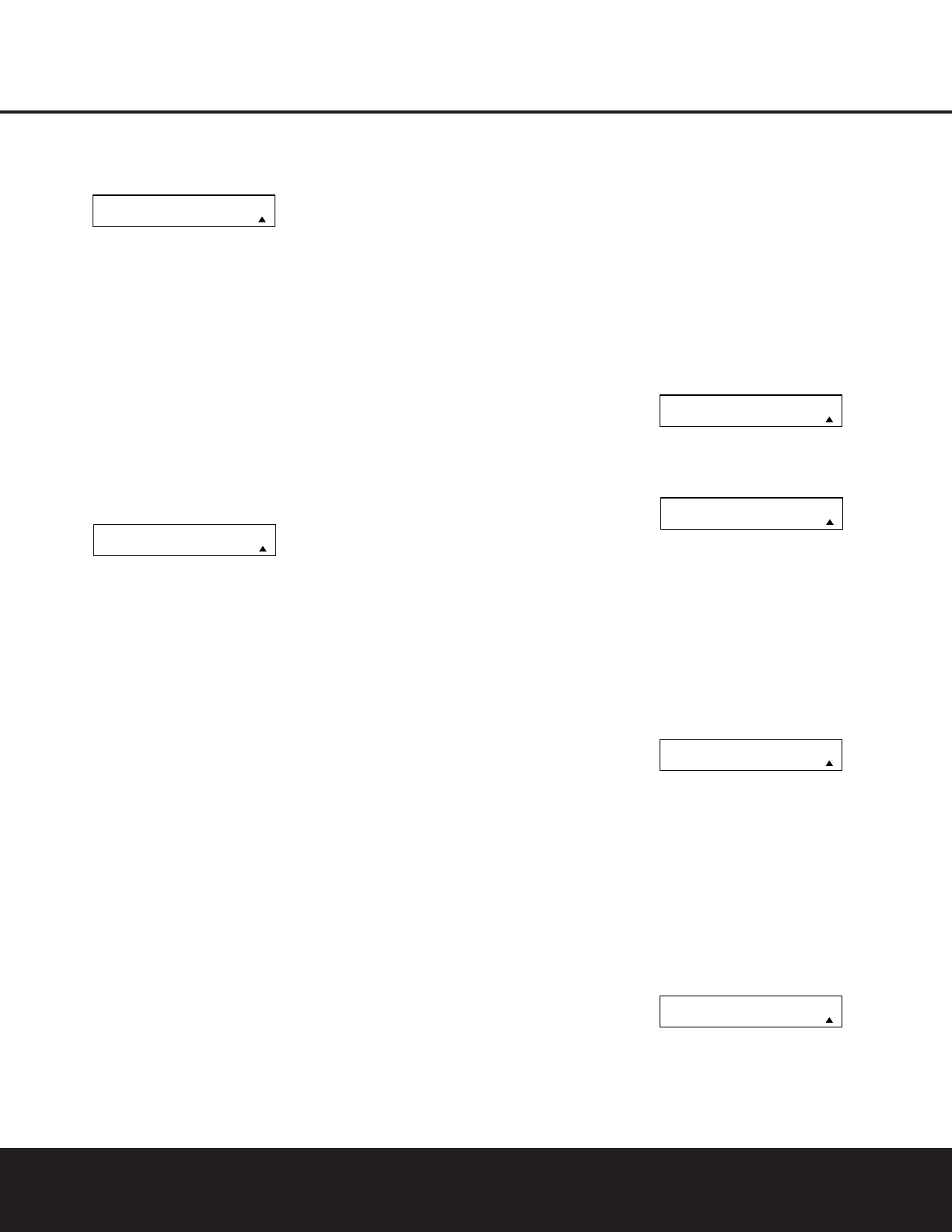
“TV,” and show how to change it to take on the
codes for operating a VCR. When that
device’s
name appears, press the
Set Button
q
.
Figure 38
4. Once the “old” device type has been selected,
you need to tell the remote which set of remote
codes
to use as a replacement for the device just
selected.
When the instructions shown in Figure
39 appear, press the
⁄
/
¤
Navigation Button
o to scroll through the list of device categories
to find the name of the device that you wish to
use. The old device name will remain on the left
side of the LCD screen, while the replacement
device list will scroll to its right. For example, press
the
⁄
Navigation Button o until the display
screen reads
TV<-VCR to have the VID 2/TV
Button transmit the commands used to control a
VCR. Press the
Set Button q when the
desired device combination appears.
Figure 39
5. Once the new device is selected, the remainder of
the process will select the codes for the specific
brand to be used, and for that reason they are
identical to the way a device is programmed using
manual entry. Continue the process as outlined in
the next few steps, remembering that if the codes
for your specific device are not found, you may
select any brand and then “learn” the proper
codes into the DPR remote using the process
outlined on page 42. To begin the process, start
by selecting the brand of device, as shown in
Figure 22. Press the
⁄
/
¤
Navigation Button
o until the brand name of the device you are
programming into the remote appears on
the lower line of the display and then press
the
Set Button q.
6. The next step is important, as it determines which
codes will operate the source device or display.
Point the DPR remote at the device being pro-
grammed and, following the instructions shown
on the remote’s
LCD Information Display
2
,
press and release the
Numeric Keys
A
one at
a time, starting with the
“1” Button
A
. After
you press the
“1” Button
A
, the remote’s
LCD screen
will briefly go blank as the code is
being transmitted,
but you will see the “transmit”
icon in the upper right corner of the display to
serve as confirmation that the remote is sending
out commands.
7. After you press and release the number key,
watch the device being programmed to see
whether it turns off. As shown in the instructions
that will appear on the next menu screen (Figure
24), press the
Set Button q, and then skip to
Step 9. If the unit does
not turn off, proceed to
the next step.
8. If the device being programmed into the DPR
remote does
not turn off after you have pressed
the
“1” Button
A
, continue Steps 6 and 7 by
pressing the available numeric keys shown until
the device turns off. If the device still does not turn
off after all choices have been tried, the code for
this specific device is not in the DPR remote
library under that brand name. If that is the case,
we suggest that you press the
Set Button q
to accept the codes from another brand so that
the programming is completed, but remember
that you will then have to program the remote
manually by following the Learning Commands
instructions on page 42.
9. When the device being programmed does turn off
after a numeric key has been pressed, you must
press the
Set Button q within five seconds to
enter the setting into the remote’s memory. After
you press the Set button, the top line of the LCD
display will read
SAVING... and then the word
SAVED will flash four times in the center of the
bottom line.
10. When the codes are saved the remote will return
to normal operation, and whenever you press
the
Input Selector Button
3
that was just
programmed, the display will show the original
device type code at the far left side of the display,
with the name of the new code set type in brack-
ets. For example, the display will read
TV<-VCR
in our example of replacing the TV codes with
those for a VCR.
Macro Programming
Macros enable you to easily repeat frequently used
combinations of multiple remote control commands
with the touch of a single button. Once a macro is
programmed, you may send up to 20 commands with
one press of the Power On or Macro buttons. This will
greatly simplify the process of turning on your system,
changing devices or other common tasks. Thanks
to the remote’s two-line display, it is easier than ever
for you to take advantage of the power of macro
commands.
Recording a Macro
To record a macro into the remote’s memory, follow
these steps:
1. Press and hold the
Program Button
y
for
about three seconds while the message shown
in Figure 18 appears in the remote’s
LCD
Information Display
2
. Release the button
when the red light under the
Set Button q
appears.
2. The remote’s
MAIN MENU message (Figure
19), will appear in the LCD display and the
Set
Button
q will remain illuminated in red. Press
the
⁄
Navigation Button o three times so
that
MACRO appears on the bottom line of the
LCD screen, as shown in Figure 40. Press the
Set Button q to enter the main macro menu
branch.
Figure 40
3. At the next menu screen (Figure 41) press the
Set Button q to begin recording a macro.
Figure 41
4. The next display screen (Figure 42) is where you
select the button that will be used to recall the
macro. The choices are the
Power On Button
1
or one of the discrete Macro Buttons
R
.
Press the
⁄
/
¤
Navigation Button o until the
name of the button you wish to program the
macro into is shown. For this example we will
show how to program a series of commands that
will automatically be sent out every time the
Power button is pressed.
Figure 42
5. The next screen that appears (Figure 43) is where
you select the device for the first command that
will be sent out as part of the macro. Press the
⁄
/
¤
Navigation Button o until the name of
the device appears on the left side of the lower
line in the LCD display. For this example, the first
button we want to have the macro “press” is the
Power On button, so the DPR device is selected.
Press the
Set Button q when the desired
device name appears to move to the next pro-
gramming step.
Figure 43
6. The next display (Figure 44) is where you begin
entering the individual commands for the macro,
in the order you wish them to be transmitted.
Remember that when you want to change devices,
SELECT A DEVICE
AVR
RECORD A MACRO
POWER ON
MACRO
RECORD A MACRO
MAIN MENU
MACRO
NEW DEVICE TYPE
TV< -VCR
OLD DEVICE TYPE
TV
44 CONFIGURING THE REMOTE
CONFIGURING THE REMOTE



